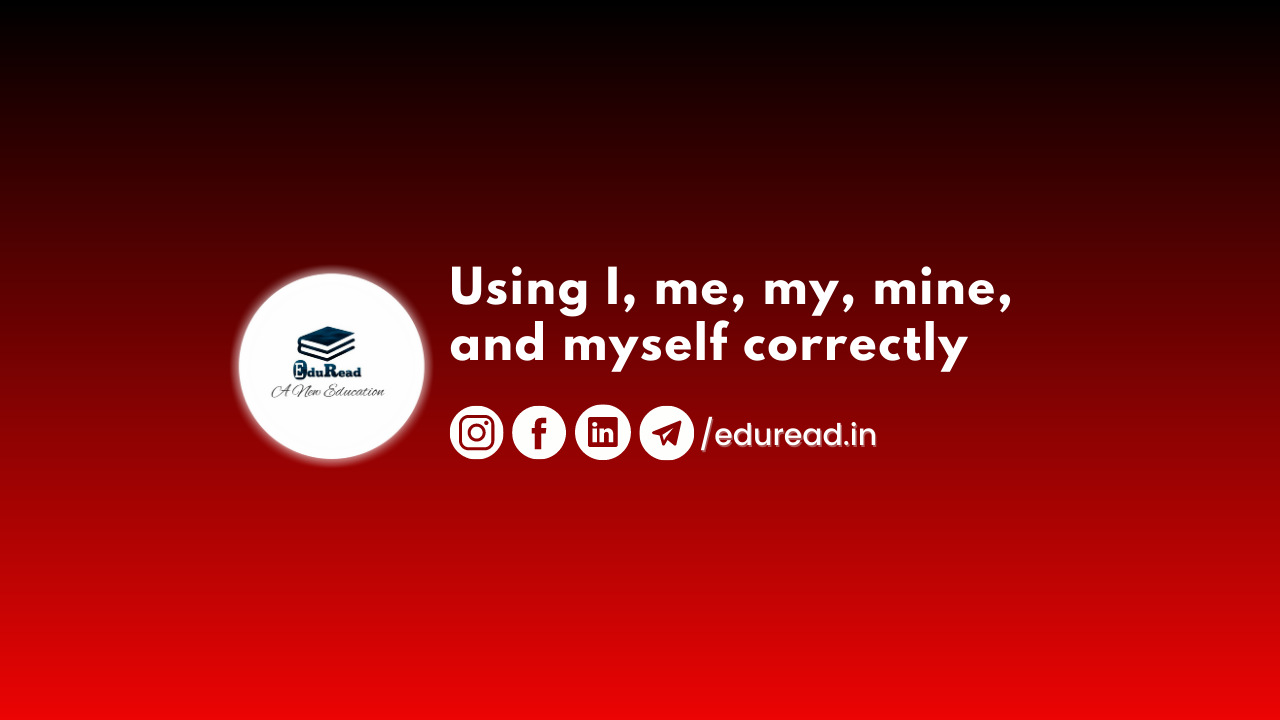The English language can be a tricky beast, especially when it comes to using pronouns correctly. Among the most commonly confused pronouns are “I,” “me,” “my,” “mine,” and “myself.” In this blog post, we will delve into the nuances of these pronouns, providing you with a clear understanding of their proper usage. So, let’s embark on this grammatical journey together and unravel the mysteries surrounding these pronouns!
Section 1: The First Person Singular Pronoun – I and Myself
The first-person singular pronoun “I” is used when you are the subject of a sentence or clause. It is crucial to remember that “I” is always capitalized, regardless of its position in a sentence. On the other hand, “myself” is a reflexive pronoun, which means it is used when the subject of the sentence is also the object.
For example:
- I am going to the park.
- John and I are going to the park.
- I bought myself a new book.
Section 2: The Object Pronoun – Me
Unlike “I,” “me” is used when you are the object of a sentence or clause. It is important to note that “me” should not be used as a subject pronoun. Often, “me” is used after prepositions, verbs, or as the direct or indirect object.
For example:
- He gave the book to me.
- Can you help me with this?
- The teacher praised me for my hard work.
Section 3: Possessive Pronouns – My and Mine
Now let’s move on to possessive pronouns. “My” is a possessive adjective before a noun, indicating ownership or association. On the other hand, “mine” is a possessive pronoun that replaces the noun, indicating ownership without mentioning the noun explicitly.
For example:
- That is my car.
- The red car is mine.
Section 4: Common Mistakes and Tips for Proper Usage
Now that we have covered the basic usage of these pronouns, let’s address some common mistakes and provide tips to help you use them correctly.
Mistake #1: Using “myself” unnecessarily
- Incorrect: John and myself are going to the party.
- Correct: John and I are going to the party.
Mistake #2: Using “myself” instead of “me” as an object pronoun
- Incorrect: He gave the invitation to me.
- Correct: He gave the invitation to me.
Mistake #3: Using “I” instead of “me” as an object pronoun
- Incorrect: Can you give John and I a ride?
- Correct: Can you give John and me a ride?
Tips:
- Use “I” when you are the subject and “me” when you are the object.
- Avoid using “myself” unless it is truly reflexive.
- Pay attention to prepositions and choose “me” when it follows them.
Section 5: Practice Makes Perfect
The best way to master the correct usage of these pronouns is through practice. Engage in conversations, write sentences, and review grammar exercises focusing on the correct application of “I,” “me,” “my,” “mine,” and “myself.”
Conclusion
By understanding the differences between “I,” “me,” “my,” “mine,” and “myself,” you can communicate more effectively and confidently in English. Remember, “I” is the subject, “me” is the object, “my” indicates possession, “mine” replaces the noun to indicate ownership, and “myself” is a reflexive pronoun used when the subject and object are the same.
Through consistent practice and attention to detail, you can avoid common mistakes and confidently use these pronouns in everyday communication. Paying close attention to the role of each pronoun in a sentence will ensure that your sentences are grammatically accurate and convey your intended meaning.
Follow Us for more such content to improve your speaking skills:
To know more, check out here: https://eduread.in/using-do-does-did-correctly-speak-new-york/
And visit us for more.

Nice post. I learn something totally new and challenging today